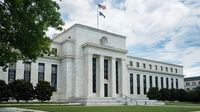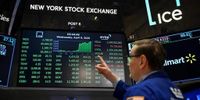The U.S. Bureau of Labor Statistics released the March Consumer Price Index (CPI) data on April 10, 2025, revealing a year-over-year increase of 2.4%, which was lower than the 2.6% increase anticipated by economists. This marks a significant moment for the U.S. economy as inflation shows signs of cooling more than expected, with the month-over-month CPI decreasing by 0.1%.
In addition to the headline CPI figures, the core CPI, which excludes the volatile food and energy prices, also came in softer than projected. The year-over-year core CPI increased by 2.8%, below the expected 3%, while the month-over-month core CPI rose by just 0.1%, less than the anticipated 0.3% increase.
The economic landscape is currently influenced by President Donald Trump’s recent decisions concerning tariffs. Following a tumultuous period in the markets, Trump announced a 90-day reprieve on reciprocal tariffs above 10%, with the exception of China. This decision has led to a cautious optimism among investors, as the S&P 500 futures gained after the CPI data release, helping to mitigate some of the losses from previous trading sessions.
In the context of the broader economic environment, the March CPI data is particularly noteworthy. Sarah House, a senior economist at Wells Fargo, commented, "The March CPI data will feel dated, but should shed some light on how the changing trade environment was already beginning to affect pricing." This perspective highlights the ongoing adjustments in the economy as it responds to changing trade policies.
The initial claims for unemployment benefits also played a role in shaping market expectations. Economists had predicted that initial claims would rise to 225,000 for the week ending April 5, 2025, up from 219,000 the previous week. This increase in claims indicates a potential slowdown in the labor market, which could influence future economic policies.
As the Federal Reserve prepares for its upcoming meetings, the implications of the latest CPI data are significant. Following the announcement of Trump’s tariff policies, the odds of a Fed rate cut at the May 7 meeting have decreased to 17%, down from 50% earlier in the week. However, markets are currently pricing in a 74% probability of a rate cut by the June 18 meeting, reflecting concerns about the inflation outlook and the labor market.
In the wake of the CPI report, the S&P 500 futures were down by 1.8%, indicating a potential pullback after the previous day’s historic rally. The day prior, the index had surged by 9.5%, marking its largest percentage gain since October 2008. Despite this volatility, the S&P 500 remains 11.2% below its record closing high from February 19, 2025, and in correction territory.
Market analysts are closely monitoring the impact of Trump’s tariffs on inflation and the labor market. The tariffs, particularly those on Chinese goods which have been raised to 125%, are expected to contribute to inflationary pressures in the coming months. As Paul Ashworth, chief North America economist at Capital Economics, noted, "Our working assumption now will be that, cowed by the market response, Trump will repeatedly extend the 'pause' meaning that this will end up looking a lot like the 10% universal tariff that he campaigned on." This statement underscores the uncertainty surrounding future tariff policies and their potential effects on the economy.
Furthermore, the minutes from the Federal Reserve's March 18-19 meeting revealed that policymakers are increasingly concerned about the risks of higher inflation coupled with slower economic growth. The minutes indicated that "participants judged that inflation was likely to be boosted this year by the effects of higher tariffs," suggesting that the Fed is preparing to navigate a complex economic landscape.
As the markets react to these developments, the focus will remain on the upcoming producer price index report, which is expected to provide further insights into inflation trends. The CPI data accounts for approximately 70% of the inputs for the Fed's primary inflation measure, the core Personal Consumption Expenditures (PCE) price index.
Overall, the March CPI report presents a mixed picture of the U.S. economy. While inflation appears to be cooling more than expected, the ongoing impacts of tariff policies and the labor market's response to these changes will be critical factors to watch in the coming months. Investors and policymakers alike will need to stay vigilant as they navigate the uncertainties ahead.







